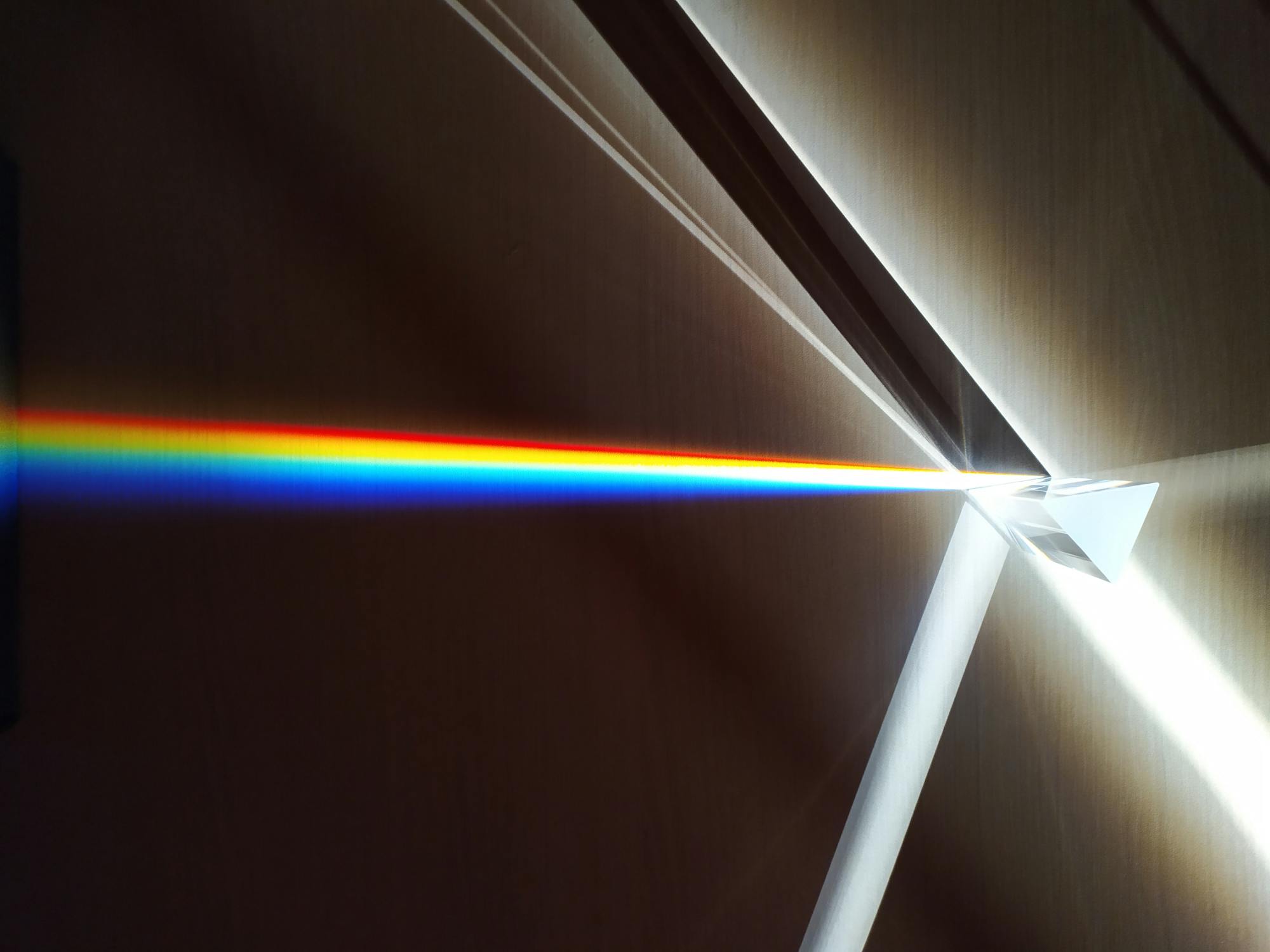Last updated on September 8th, 2023 at 06:45 am
Professional blogger Ryan Biddulph provided me with some blogging nuggets in my previous piece, Blogging Nuggets From a Pro. This discussion is essential for everyone who wants to start a blog. You can also share the link with a friend who blogs.
Today’s post will explain why the sky seems blue. Is the sky blue? Keep reading to find out.
Look at the sky
Why is the sky blue? I want you to walk outside and take a close look at the sky as you consider your response. What shade of blue is the sky? If you are reading this in the morning, the sky may appear sky blue, somewhat lighter than sky blue, or even white depending on the time of day. If you stare straight at the sunset or sunrise, you will see orange and red hues in the sky. Not long ago, when I was a kid, I had a eureka moment one day in my room when I was thinking about light. I questioned whether I was seeing the wall beside my wardrobe because my eyes were shining light into the room or because the wall itself was lit.

The test
To put this to the test, I simply closed my eyes. With my eyes closed, I couldn’t see the wall, which could only imply one of two things. Either the light was coming from my eyes, or it came from somewhere else. It didn’t take me long to figure out what was going on. My sister would have seen the wall if she had entered the room. Therefore, the light wasn’t coming from my eyes. I switched off the light in the room with my eyes open, and this time I couldn’t see the wall! I was certain my eyes were not the source of the light. However, regardless of how trivial it might seem to you, I learned a valuable lesson. The eye does not produce light. It only perceives it.

3 contributing factors
The blueness of the sky can be attributed to three factors. The first is your eye. The second is sunlight, and the third is the atmosphere. The eye is in charge of detecting sunlight. The source of colour is sunlight. The atmosphere is responsible for ‘sieving’ or ‘filtering’ colour from sunlight. Before I explain the science of why the sky is blue, let me attempt to use a simple analogy to explain what happens when you look up at the sky. When I was a child, it was extremely fashionable for kids to wear coloured sunglasses. If you were wearing red-coloured sunglasses and saw anything nearby, like a white sheet of paper, it would appear reddish. If you donned green sunglasses, everything you looked at became green.

Looking up at the sky is like wearing coloured glasses. When you stare up at the sky, the atmosphere serves as your glasses. Hold on. It will make sense in a moment. Before reaching the earth’s surface, sunlight travels through the atmosphere. The atmosphere is where sunlight is filtered into many colours. This begs the question, ‘What colour is sunlight?’ The sun is neither yellow, orange, nor red, even though the majority of people choose to depict it that way in drawings and paintings. Sunlight is white.
What colour is the sun?
White light
To put it another way, the sun is white. Whoa!! What? Yep! Not orange, yellow, or red. Do you remember the light-through-a-glass-prism experiment you did in high school? The experiment in which a light source is concentrated on one side of a glass prism? Do you recall what happened? The light was split up into different colours, or what is known as the rainbow colours. Sir Isaac Newton, the famous scientist, was the first to publish that white light comprises all other colours. He found that when light is sent through a prism, it splits into the colours of the rainbow. That is counterintuitive, I agree. What’s more, there are two ways that light may behave: as a wave and as a particle. If you combine the colours of the rainbow, you get white light! If light from the sun is white, then it follows that sunlight ‘contains’ all other colours. When the hues of the rainbow are combined, white light is produced! If sunshine is white, it follows that sunlight ‘contains’ all other hues. Let’s take a closer look at white light.


Inside white light
When the colours of the rainbow, abbreviated as ROYGBIV, are mixed, white light is produced. R stands for red, O stands for orange, Y stands for yellow, G stands for green, B stands for blue, I is for indigo, and V stands for violet. Remember that light has the properties of both a particle and a wave. The wavelength of a wave is the length between its peaks. Don’t be overwhelmed by all these physics terminologies; I have a simple demonstration for you. I’m sure you’ve tossed a stone into a puddle or body of water before. When the stone came into contact with water, it created several ring-like patterns that stretched out from where the stone drowned. The rings produced in the water by the stone eventually vanish.

Wavelength of ROYGBIV
The distance between one ring’s maximum height and another ring, if they were placed side by side, is known as the wavelength of the ring. Light acts similarly to stone. It possesses energy and the ability to generate waves. Different heights of rings will be generated depending on the energy of the stone and the speed with which it was thrown, and the duration for the rings to vanish will vary. ROYGBIV, the rainbow colours, always appear in that sequence of diminishing wavelengths. The wavelengths are presented in ascending order, with red having the largest (or longest) wavelength and violet having the smallest (or shortest). Yellow, therefore, has a larger wavelength than green. The wavelength of blue is likewise longer than that of indigo and violet.
Experiment at home
To understand this property of white light, you can do a simple experiment at home. Get two clear, colourless glasses, a torch (you may use the torch on your phone), a spoon, and a tin of milk. Fill the two glasses halfway with clean water. Pour a teaspoon of milk into one of the glasses and thoroughly mix it. Now raise the glass of water—the one without any milk—to your eye level. Turn on the torch with your other hand. Concentrate the light on one side of the glass so that it passes through the glass, through the water, and out the other side. Make a mental note of the colour of the water. Hold the torch at various angles and take note of any colours you see. Take the glass of water that you mixed with the spoonful of milk. Repeat the procedure you used for the other glass of water on this glass containing water. What colour did you notice this time?

What did you see?
You won’t notice any colour in the glass of water. The water will be colourless. However, in the glass of water containing milk, you will notice a bluish tint, or depending on the type of milk, a variety of colours ranging from blue to green to yellow. The purpose of this experiment is to show that the light your eyes see is dependent on ‘the components’ of the medium you are looking at. That is, you see colour because various objects are composed of different elements. Experiment with different liquids or powders in a glass of water and note the colour they generate.
The facts so far
So far, we’ve established a few important points.
1. Light is not produced by the eyes.
2. The colour of sunlight is white.
3. White is made up of all other colours.
4. Components of any substance or object influence the colour it reflects.

The atmosphere
Let us now turn our attention to the atmosphere. The atmosphere is made up of many particles, ranging from gases to water molecules, sand, and so on. The atmosphere is invisible to the unaided eye. The atmosphere contains billions of distinct particles. Nitrogen molecules make up 78% of the atmosphere, oxygen molecules 21%, and the balance is made up of various gases. When we look up at the sky, this atmosphere comes between our eyes and the sun. Remember the analogy of the coloured glasses? The atmosphere acts like coloured glasses on your eyes. Remember that the nature of the atmosphere varies over time due to the free movement of its constituents. For instance, there can be a strong concentration of distinct particles in two different regions of the atmosphere. One region of the atmosphere may be dominated by smoke and another by dust. Most of the time, the higher we go above the atmosphere, the cleaner it becomes since it is far from human activity.

How the sky turns blue
We now know the three primary causes of the sky’s blue colour, so let’s discuss how it occurs. Before reaching your eyes, sunlight travels through the atmosphere as it descends to the Earth. Sunlight is scattered in several colours in the atmosphere. This is referred to as the Rayleigh scattering of light. Lord Rayleigh, a British mathematician and physicist, first published it in 1871. The initial observation, however, was made two years earlier by an Irish scientist named John Tyndall. Tyndall discovered that blue light was dispersed more than other colours, but he did not publish his findings. In the scientific community, the publication is what matters, and since Rayleigh published the paper explaining the scattering of light, he was acknowledged as the one who discovered this phenomenon. Since Rayleigh published the paper describing the scattering of light, he was recognised as the one who discovered this phenomenon because publication is what counts in the scientific world.

Rayleigh scattering
The elastic scattering of light by particles smaller than the wavelength of light is known as Rayleigh scattering. This means that if the light hits a particle whose size is equal to the wavelength of any of the rainbow’s colours, that colour will be scattered (dispersed and reflected). The particle absorbs all other colours. Shorter wavelengths are scattered more than longer wavelengths in the atmosphere. This implies that shorter wavelengths are readily dispersed back into space by the atmosphere. All other colours journey through the atmosphere. In the ROYGBIV spectrum, do you recall which colour has the shortest wavelength? It’s violet. This implies that violet light gets dispersed the most back into the sky when it passes through the atmosphere. Other shorter wavelengths, such as blue and indigo, are distributed into the atmosphere as well. This theory holds that violet is the most dispersed of all the colours, so when you gaze up, the sky should appear violet. So, why does the sky seem blue? Why are we seeing blue instead of violet?

The sky is violet
There is violet in the sky, but human eyes are designed to see blue light better than violet. Two components in the human eye are involved in recognising colour. They are the cones and rods. Colour is divided into three groups by cones: red, green, and blue. The colour intensity or shades are detected by the rods. Blue light is more visible to the eyes than violet light. As a result, even if the atmosphere scatters violet light more, the eyes are not equipped to see it. Instead, the sky is filled with the next colour in the spectrum, which has a shorter wavelength and is visible to the human eye.
This explains why the sky is blue. When light from the sun moves through the atmosphere, it is scattered by particles (molecules) in the atmosphere. Shorter wavelengths are scattered more than longer wavelengths. The most scattered colour is violet, which is also the shortest, followed by indigo, blue, green, yellow, orange, and red. The sky seems blue because the human eye is not positioned to view violet light well but rather blue light. There you go. That’s all there is to it. This also implies that if the human eye were properly able to perceive violet light, the sky would seem violet. However, because it is not, and because the eye receives blue light better, the sky appears blue!

How blue is the sky?
Now, the sky’s blueness varies in intensity. Its strength varies with the time of day. The sky seems virtually white in the mornings, then turns sky blue (light blue) in the early afternoons. In the late afternoons, the sky becomes darker blue until it darkens at night. Can you guess why the sky’s blueness changes during the day? What about the stunning orange-reddish sunrises and sunsets that we occasionally witness? What causes the sky to turn reddish at times? The answer is how far sunlight travels through the atmosphere. How so?
An astrophysicist explains
From east to west
At what times of day have you successfully attempted to gaze at the sun? (Do not do this regularly; your eyes could get injured.) Sunrise and sunset are the only times of day when anyone may gently stare at the sun. This is related to the sun’s location to your eyes. The earth is a large ball that rotates on its axis, but we cannot perceive it because of its sluggish pace. A day is defined as a single complete rotation of the earth. Because of the rotation of the earth, which faces the sun, it is quite easy to distinguish between day and night. One-half of the earth will experience day, while the other half will experience night. Let’s stick to a simpler convention in terms of the sun’s position. We prefer to imagine that the sun rises in the east and sets in the west. If you were to stand motionless and face the sun with your arms held out sideways, your left hand would point east and your right hand would point west.

Your back faces north, while your front faces south. We’re now concerned about the east, west, and overhead. When the sun is right over your head, it is said to be overhead. When the sun is directly overhead, you must raise your head to see it. To view east and west, one only needs to turn their head. Soon you’ll be grateful for this detour into cardinal directions. When the sun is overhead, the quantity of atmosphere that sunlight passes through before reaching the ground is significantly less than the quantity of atmosphere it goes through during sunset and sunrise. Think about it like this: When the sun is overhead, it is said to be resting on your head. The tip of the middle finger on your outstretched left hand is where the sun rises in the east.

At sunset, the sun is at the end of the middle finger of your extended right hand. The distance between the sun and your eyes at sunrise (or sunset) is greater than the distance between your eyes and the sun when it is overhead. Because the atmosphere’s thickness has increased, more airborne particles are now exposed to sunlight, causing more light to be scattered. The farther away the sun is, the bluer the sky will get. That explains why the night sky is so dark blue! The sun is simply too far away.
Why clouds are white
The clouds are another observation that helps to clarify the dispersion of light. Clouds are typically white. It stands out against the sky’s blue background. Why are clouds not the same colour as the sky? It’s because water molecules are the most abundant component of clouds. The wavelength of these water molecules is the same as that of white light. This means that every colour of the spectrum is evenly distributed, resulting in white clouds. I’ll leave it to you to figure out why certain clouds appear grey. Please leave your response in the comments section. I’ll respond to this in the comments area, so keep an eye out for them.



Do you now understand why the colour of the sun is white? The sun appears yellow from Earth. The sun would appear white to a person in outer space or on the moon. The sun’s light cannot be scattered in space since there is no atmosphere.
The orange sky
Let us conclude with the lovely intense orange sky that we occasionally see. The amount of atmosphere that the light must pass through increases when the sun is low on the horizon, as it happens at dawn and sunset. This causes more scattering of light, especially longer wavelengths like yellow, orange, and red, resulting in vivid dawn and sunset skies. Sometimes the sky can turn extremely red, as though it were painted red. When the sky gets overly reddish, it is because there are more particles in the atmosphere, generally from air pollution, which causes more scattering of red light. Foreign particles are concentrated in the portion of the atmosphere that appears reddish or orange at sunset/sunrise. Remember that on an average day, the atmosphere is 78% nitrogen, 21% oxygen, and the rest is made up of various gases. When foreign particles in the atmosphere, such as dust, smoke, and pollen, have the same size as the wavelength of the red side of the spectrum, red light is scattered more!


Nature is romantic
Nature is romantic. It’s a love tale between your eyes, the atmosphere, and the sun. The atmosphere has stolen blue light from the sun. Violet is envious because you didn’t see her when you were admiring the magnificent blue sky. It’s not your fault, though. Your eyes are just not equipped to see violet light. The more distant the sun is, the more atmosphere sunlight must travel through, and the greater the distance it travels through, the more particles it meets, creating more scattering of blue light.
Can you explain why the sea seems blue using the same logic?


What’s next in Peter’s Box? ¡Hasta luego amigos!





